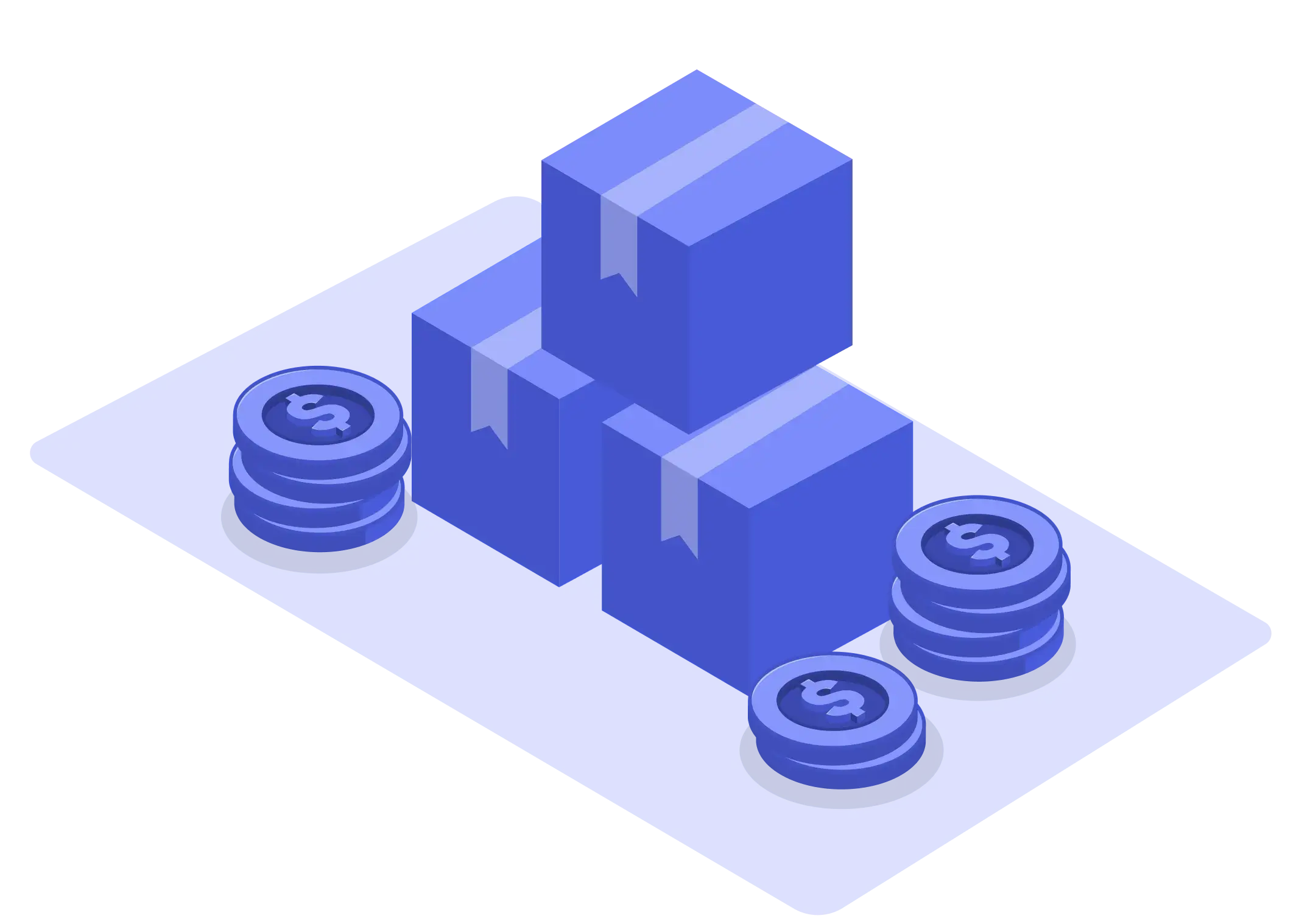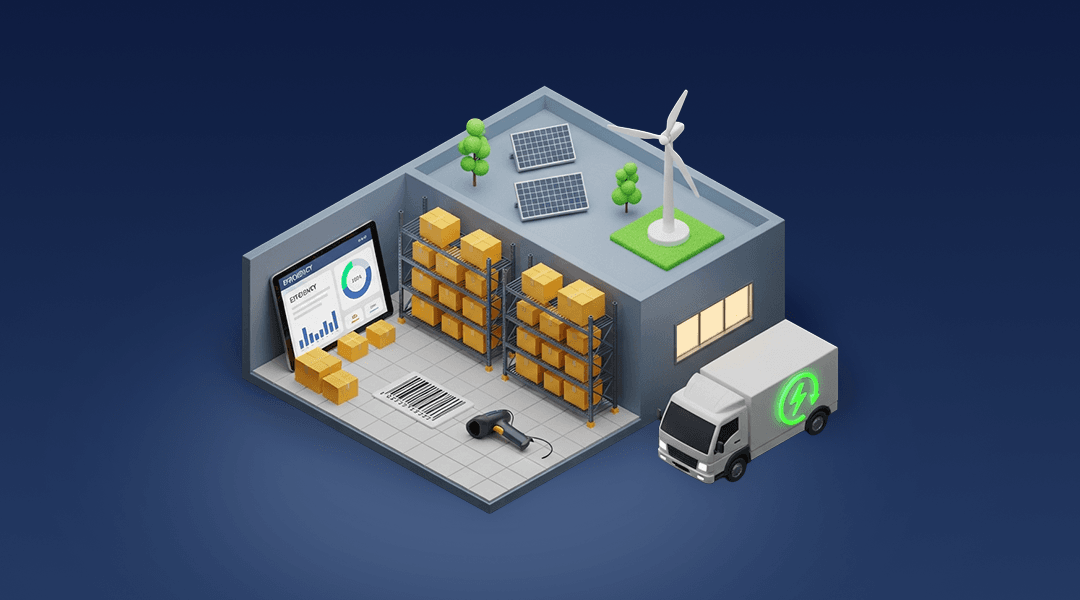Types of Inventory Costs & Calculations Guide

Table of Contents
Inventory cost is not just some data on a balance sheet, but is the foundation of good business practice. Understanding inventory costs is crucial for any organization that deals with physical goods, whether you own a small shop or run a large industrial facility. These expenditures, which span from raw material purchases to finished product storage, are crucial in evaluating profitability and operating efficiency.
Definition and Importance for Business Operations
Goods costs encompass all expenses related to purchasing, keeping, and managing goods. This comprises not just the items' price but also additional costs such as warehousing, insurance, labor, and even spoilage or obsolescence.
Why does this matter? Poorly managed inventory costs can quietly eat away at profitability, interrupt cash flow, and leave organizations scurrying to satisfy consumer demand. On the other hand, understanding inventory cost management enables organizations to streamline processes, decrease waste, and boost their bottom line. It's the secret sauce for being competitive in today's fast-paced marketplace.
Consider this: if you order too much merchandise, you risk locking up capital and incurring expensive storage costs. If you order too little, you risk missing out on sales opportunities. Striking the correct balance begins with understanding the various types of inventory costs and how they affect your business.
Types of Inventory Costs
When it comes to inventory management, not all costs are the same. A number of charges can eat into your revenues between the time you place an order and when your products leave the shelf. Understanding the various forms of inventory expenses is the first step toward successful inventory cost management. Let's look at the most prevalent ones and how they affect your business.
Ordering Costs
Ordering costs are the expenses incurred when you place an order with a supplier. Administrative operations such as processing purchase orders, communicating with vendors, shipping expenses, and even labor involved in receiving and checking goods fall under this category.
- Purchase Orders: The administrative expenses associated with generating and processing purchase orders.
- Transportation: These costs include shipping and handling from the supplier to your warehouse.
- Receiving and Handling: The cost of unloading, inspecting, and storing the new inventory.
- Electronic Data Interchange (EDI): The costs of maintaining EDI systems to ensure seamless order processing for larger firms.
While these costs may seem negligible when viewed independently, they can add up quickly when met with poor management. Ordering many times in small quantities instead of maximizing order quantities can lead to explosive ordering costs. The ultimate way to decrease these costs is to determine optimal ordering frequencies and automate processes through technology.
Holding costs
Holding costs, or carrying costs, are the charges involved with holding unsold merchandise. This covers:
- Storage Costs: Rent, utilities, and equipment for warehousing.
- Capital Costs: The cost of capital tied up in inventory, including interest, if the inventory was financed.
- Inventory Service Costs: Cost of inventory management, including handling, insurance, security, and administrative costs.
- Inventory Risk Costs: Expenses due to theft, damage, obsolescence, or shrinkage.
To manage holding costs effectively:
- Just-In-Time (JIT) Inventory: Stock only when it is necessary to shorten the storage time.
- Inventory Turnover: Continuous updates to the inventory stock level to verify that stock is being sold off shelves.
- Warehouse Optimization: Efficient utilization of space and technology for space saving and cost saving.
Stockout Costs
Stockout expenses are the result of running out of inventory. While they may not be as evident as other expenses, they might be substantial. They include:
- Lost Sales: Revenue lost from customers who leave because you're out of stock.
- Client Dissatisfaction: Negative reputation and loss of client loyalty.
- Expediting Costs: Paying more to hurry orders to meet demand.
- Production Delays: Stockouts can halt manufacturing lines.
To reduce stockout costs:
- Accurate Demand Forecasting: Using data to forecast demand and keep inventory levels optimal.
- Safety Stock: A buffer stock kept on hand to address unforeseen demand spikes.
- Supplier Relationships: Establishing dependable supply channels to avoid delays.
Shrinkage and Spoilage Costs
These costs refer to inventory shrinkage, which can occur due to various factors, including damage to the goods, theft, or spoilage.
- Shrinkage: Losses caused by theft, damage, or errors in record-keeping.
- Spoilage: Any loss incurred due to the perishable goods that have become unusable or expired.
To avoid incurring such costs:
- Security Measures: This includes the use of computerized systems to prevent theft.
- Proper Storage: Goods are always to be kept in a way that would minimize damage and spoilage.
- Regular Audits: Regular inventory audits would be emphasized to detect those cases of shrinkage as soon as possible.
Obsolescence Costs
Obsolescence expenses occur when inventory is no longer sellable due to technological advancements.
- Seasonal or fashion trends: Products that are no longer in demand due to shifting trends.
- Regulatory Changes: Products that no longer comply with new regulations or standards.
To reduce obsolescence:
- Inventory Turnover: Regularly inspect inventory in search of items that move more slowly.
- Product Lifecycle Management: Planning to update items or phase them out.
- Diversification: Diversification entails providing a variety of items to spread the risk of obsolescence.
Businesses that understand and manage these types of inventory expenses can improve their bottom line, operational efficiency, customer satisfaction, and overall business agility. Remember that inventory costs are more than simply the amount you spend on items; they also include how you manage every facet of those commodities, from ordering to sale.
How to Calculate Inventory Costs
We've looked at the various types of inventory charges, and now it's time to put that information into practice. This section will walk you through the process of estimating inventory costs, giving you the tools you need to manage your inventory and improve your bottom line efficiently.
Step-by-Step Guide to Inventory Cost Calculation
Cracking the inventory cost code may appear to be similar to solving a difficult equation. But do not be afraid! Here's a simple guide to help you determine inventory expenses with confidence:
- Inventory Accounting Methodology: Choose the method that aligns best with your business model: First-In-First-Out (FIFO), Last-In-First-Out (LIFO), or Weighted Average Cost (WAC). This lays your groundwork for cost calculations.
- Identify Your Inventory Expenditures: First, you must take a tally of all the expenses related to your inventory. This includes all types of inventory costs associated with inventory, from direct costs such as purchase, freight, and handling to indirect costs such as shrinkage or obsolescence.
- Gather Your Information: You must get any relevant information available about the total cost of purchased products, storage, and the number of units sold or in stock. One last time, check that your figures are accurate.
- Apply the Inventory Cost Formula: You can then work out your total inventory costs using the following formula. Don't sweat just now; we will work through an example in the next section of this Omniful blog.
- Analyze and Optimize: Once you find out how much your costs are, analyze the figures to see if there is anything for you to change. Are your holding costs too high? Are you being starved of cash flow from stockouts? Use these insights to work on your inventory cost management.
Inventory Cost Formula with Examples
The basic formula for calculating inventory costs is:
Total Inventory Costs = Purchase Costs + Ordering Costs + Holding Costs + Shortage Costs + Shrinkage/Obsolescence Costs
Example:
- Purchase Costs: A business orders 100 units at $12 each, totaling $1,200.
- Ordering Costs: The cost to place an order is $360.
- Holding Costs: The holding cost per unit is $0.80, and the average inventory level is 50 units, so holding costs are $40.
- Shortage Costs: Due to a recent stockout, the business estimates lost sales and expedited shipping costs at $400.
Total Inventory Costs = $1,200 + $360 + $40 + $400 = $2,000
***Economic Order Quantity (EOQ): ***This formula helps determine the optimal order size to minimize total inventory costs: EOQ = √(2DS/H), where D is the annual demand, S is the ordering cost per order, and H is the holding cost per unit per year.
Example:
Let's say a business sells 1,000 units of a product annually. The ordering cost per order is $50, and the holding cost per unit per year is $5.
EOQ = √(2 * 1000 * 50 / 5) = 141 units (approximately).
This means that ordering around 141 units at a time would minimize total inventory costs.
Final Thoughts
How can you minimize the different types of inventory costs we mentioned above? The answer is a great Inventory Management Solution like Omniful’s. But how?
Manually calculating inventory costs can be time-consuming and prone to errors. Investing in inventory management software like ours can automate these calculations, providing you with real-time insights into your inventory costs. Our systems can:
- Track Inventory Levels: Monitor inventory levels across multiple locations.
- Automate Ordering: Trigger automatic reorders when inventory falls below a certain level.
- Generate Reports: Provide detailed reports on inventory costs, sales, and other key metrics.
- Integrate with Accounting Systems: Seamlessly integrate with your accounting software for accurate financial reporting.
By leveraging technology, you can streamline your inventory cost management process, improve accuracy, and free up valuable time for other business activities. Contact us and Book a Demo today!
FAQs
What are the main types of inventory costs?
Think of inventory costs as a family of expenses, each with its own personality. The main types include:
- Ordering costs refer to the administrative overhead associated with placing an order, such as paperwork and shipping.
- Holding costs (also known as carrying costs) are other expenses incurred while carrying your stock. These might include rent for warehouse space and insurance.
- Stockout costs are the costs associated with running out of stock, such as revenue loss and dissatisfied customers.
- Shrinkage and spoilage costs may be described as losses due to damages, theft, or spoilage.
- Obsolescence costs represent the possibility of an item becoming obsolete or unable to be sold.
Understanding the different types of inventory costs will help one understand how cost management could be implemented clearly.
How can businesses calculate inventory costs accurately?
Gather data (prices, costs), calculate each component (ordering, holding, etc.), and add them up. Formulas like EOQ and inventory management software can help. Accurately calculating inventory costs is crucial.























